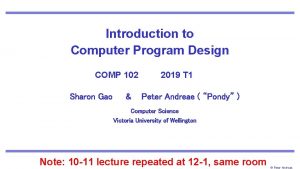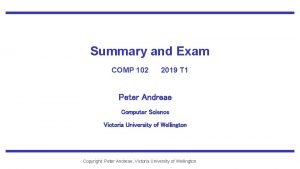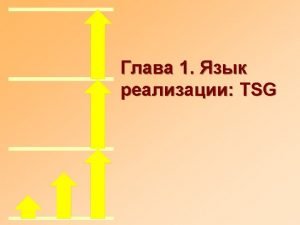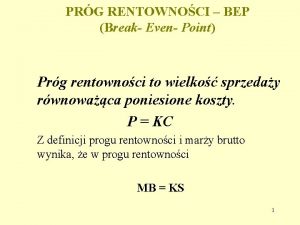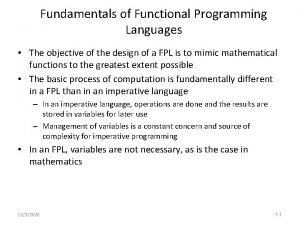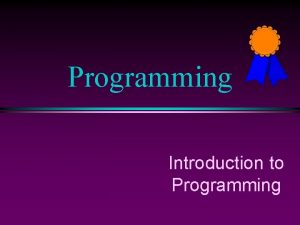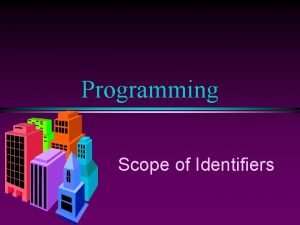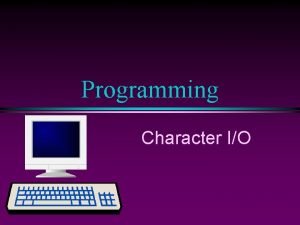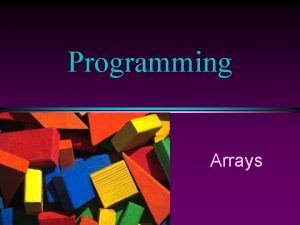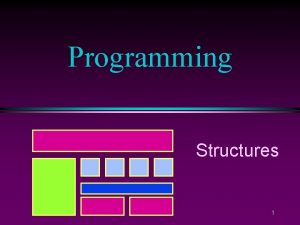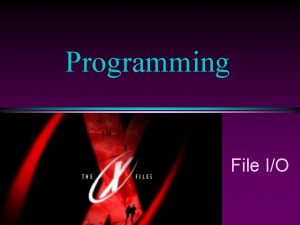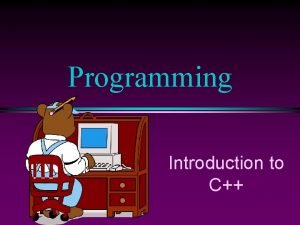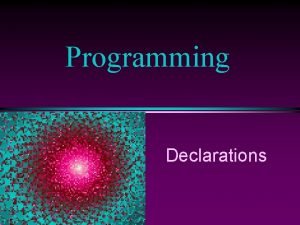Programming Switch command COMP 102 Prog Fundamentals Switch











- Slides: 11

Programming Switch command

COMP 102 Prog. Fundamentals: Switch command / Slide 2 Multiple Selection: The switch Statement multiway expression value 1 value 2 value 3 value 4 action 1 action 2 action 3 action 4

COMP 102 Prog. Fundamentals: Switch command / Slide 3 Multiple Selection: The switch Statement Syntax: switch (<selector expression>) case <label 1> : <sequence break; case <label 2> : <sequence break; case <labeln> : <sequence break; default : <sequence } { of statements>;

COMP 102 Prog. Fundamentals: Switch command / Slide 4 Multiple Selection: The switch Statement Meaning: l Evaluate selector expression. l The selector expression can only be: a bool, an integer, an enum constant, or a char. l Match case label. l Execute sequence of statements of matching label. l If break encountered, go to end of the switch statement. l Otherwise continue execution.

COMP 102 Prog. Fundamentals: Switch command / Slide 5 Multiple Selection: The switch Statement action case 1 case 2 action case 3 default action

COMP 102 Prog. Fundamentals: Switch command / Slide 6 switch Statement: Example 1 • If you have a 95, what grade will you get? switch(int(score)/10){ case 10: case 9: cout << "Grade case 8: cout << "Grade case 7: cout << "Grade case 6: cout << "Grade default: cout << "Grade } = = = A" B" C" D" F" << << << endl; endl;

COMP 102 Prog. Fundamentals: Switch command / Slide 7 switch Statement: Example 2 switch(int(score)/10){ case 10: case 9: cout << "Grade break; case 8: cout << "Grade break; case 7: cout << "Grade break; case 6: cout << "Grade break; default: cout << "Grade } = A" << endl; = B" << endl; = C" << endl; = D" << endl; = F" << endl;

COMP 102 Prog. Fundamentals: Switch command / Slide 8 switch Statement: Example 2 is equivalent to: if (score >= 90) cout << "Grade = A" else if (score >= 80) cout << "Grade = B" else if (score >= 70) cout << "Grade = C" else if (score >= 60) cout << "Grade = D" else // score < 59 cout << "Grade = F" << endl; << endl;

COMP 102 Prog. Fundamentals: Switch command / Slide 9 switch Statement: Example 2 #include <iostream> using namespace std; int main() { char answer; cout << "Is comp 102 an easy course? (y/n): "; cin >> answer; switch (answer){ case 'Y': case 'y': cout << "I think so too!" << endl; break; case 'N': case 'n': cout << "Are you kidding? " << endl; break; default: cout << "Is that a yes or no? " << endl; } return 0; }

COMP 102 Prog. Fundamentals: Switch command / Slide 10 switch Statement with Multiple Labels: Example 3 switch (watts) { case 25 : lifespan = 2500; break; case 40 : case 60 : lifespan = 1000; break; case 75 : lifespan = 750; break; default : lifespan = 0; } // end switch

COMP 102 Prog. Fundamentals: Switch command / Slide 11 Points to Remember l l l The expression followed by each case label must be a constant expression. No two case labels may have the same value. Two case labels may be associated with the same statements. The default label is not required. There can be only one default label, and it is usually last.
